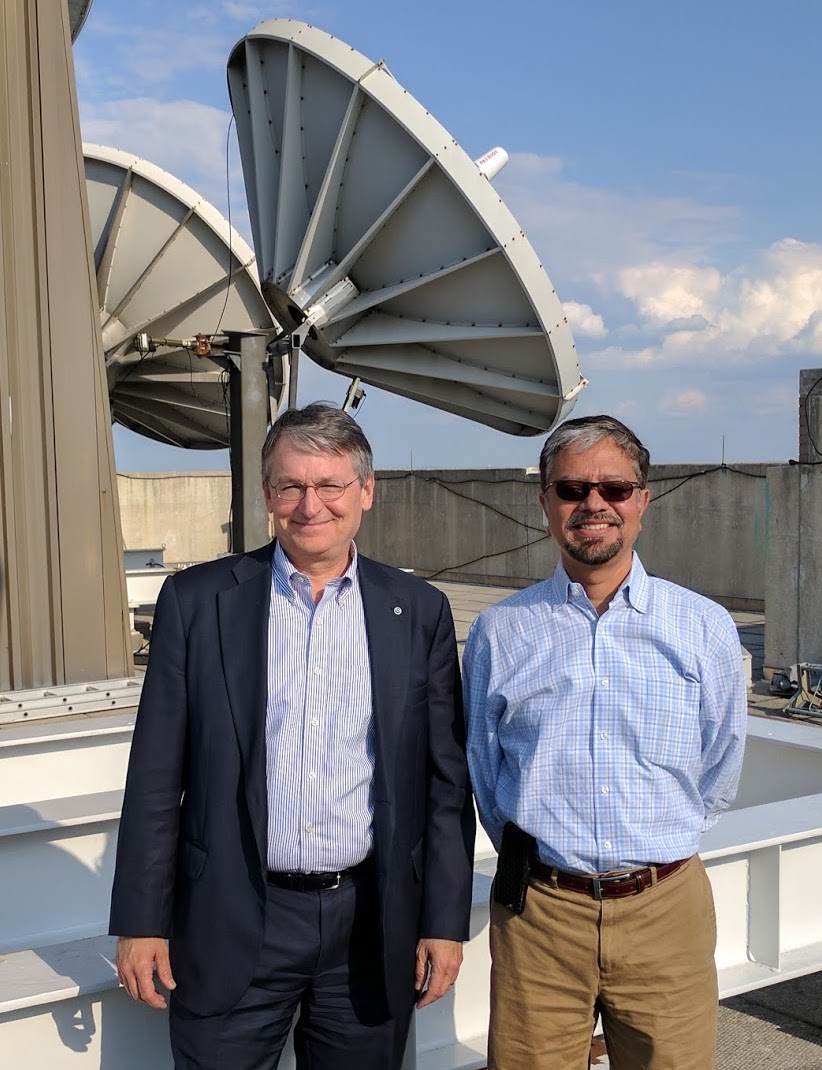
[ Archive ]

 |
CIMSS-NOAA Weekly Report [ Archive ] |
 |
ASPB AND CIMSS WEEKLY HIGHLIGHTS FOR THE WEEK ENDING MAY 12, 2017
IN THE PRESS:
LMOS 2017 Sheboygan Press Interview: Brad Pierce was interviewed by the Sheboygan Press, where he provided information about the participants, potential outcomes and benefits, and instrumentation that will be deployed during the upcoming Lake Michigan Ozone Study (LMOS 2017). LMOS is a collaborative, multi-agency field study of ozone chemistry and meteorology along the Wisconsin-Illinois Lake Michigan shoreline using a combination of aircraft, ground‐based and ship-based measurements. The UW-Madison Space Science and Engineering Center (SSEC) Portable Atmospheric Research Center (SPARC) will be deployed in Sheboygan, WI to provide continuous observations of the lake breeze circulation that are critical to the LMOS science objectives. SPARC will also provide enhanced measurements for the Advanced Baseline Imager (ABI) product validation as part of the GOES-16 Post Launch Test (PLT). (R.B. Pierce, E/RA2, 608-890-1892, brad.pierce@noaa.gov)
ITEMS FOR THE ADMINISTRATOR:
ITEMS FOR THE ASSISTANT ADMINISTRATOR:
ITEMS FOR THE OFFICE DIRECTOR, STAR:
CLAVR-x Enterprise Clouds TRR: The Clouds from AVHRR Extended (CLAVR-x) has been generating cloud properties operationally on the Advanced Very High Resolution Radiometer (AVHRR) and the Geostationary Operational Environmental Satellite (GOES) Imagers for over 15 years. NESDIS would like legacy systems like CLAVR-x to retire and have the NOAA Enterprise Processing System take over the generation of these products. This week a Technical Readiness Review (TRR) was held and passed about the transition of the CLAVR-x code into the Enterprise System. These reviews are important gateways in the transition process. The major hurdle, however, is the lack of computational resources in NESDIS operations. This hurdle will likely push any transition into the third quarter of FY18. (A. Heidinger, E/RA2, 608-263-6757, andrew.heidinger@noaa.gov)
GOES Fog/Low Stratus Algorithm Readiness Review: An Algorithm Readiness Review (ARR) for the GOES-13/14/15 Fog/Low Stratus (FLS) products, developed by NOAA/NESDIS/STAR and the Cooperative Institute for Meteorological Satellite Studies (CIMSS), was held and passed this week. The National Weather Service (NWS) routinely utilizes the NOAA/CIMSS FLS products via an experimental data feed from the University of Wisconsin. Several operational benefits that are directly attributable to the FLS products, including a reduction in the number of flight diversions due to low visibility at airports, have been demonstrated. NESDIS operations are tentatively expected to begin production of the NOAA/CIMSS FLS products by August of 2017. A GOES-16 version of the FLS products is scheduled to become operational in 2018. (M. Pavolonis, E/RA2, 608-263-9597, Mike.Pavolonis@noaa.gov)
ITEMS FOR THE DIVISION CHIEF, CoRP:
Total Precipatable Water data on NOAA’s Science On a Sphere: The Cooperative Institute for Meteorological Satellite Studies (CIMSS) released a short movie for NOAA’s Science On a Sphere (SOS) this week featuring three months of global Total Precipatable Water (TPW2) data measured by microwave sensors on the NOAA-18, NOAA-19, Metop-A, Metop-B, and Suomi-NPP polar-orbiting satellites. The animation provides visuals to a discussion of how atmospheric rivers helped reduce the drought footprint across the United States this past winter. This winter climate digest product was distributed to the SOS Network of 120 science centers and a YouTube version of the 3-minute video is linked from this site: http://sphere.ssec.wisc.edu/winter2016-17/. (M. Mooney, CIMSS, 608-265-2123, R. Kohrs, SSEC, T. Wimmers, CIMSS)
GOES-16 Images of Colorado Large Hail Event: Geostationary Operational Environmental Satellite (GOES)-16 visible and infrared images of a large hail event in eastern Colorado on May 8, 2017 were posted on the Cooperative Institute for Meteorological Satellite Studies (CIMSS) Satellite Blog (http://cimss.ssec.wisc.edu/goes/blog/archives/23932). Both GOES-16 Mesoscale Sectors were positioned over that region, providing imagery at 30-second intervals. Hail as large as 2.75 inches in diameter was reported in the Denver area, which caused widespread damage to vehicles and structures. (S. Bachmeier, CIMSS, 608-263-3958)
(Click image to enlarge)
Figure caption: GOES-16 Visible (0.64 µm, left) and Infrared Window (10.35 µm. right) images at 21:05:57 UTC on May 8, 2017. SPC storm reports of hail size (in inches; H275 = 2.75 inches) are plotted in cyan.
VISITORS:
STAR Director and CoRP Division Chief Visit CIMSS: Harry Cikanek, the STAR Directory, and Satya Kalluri, the STAR Cooperative Research Program Division (CoRP) Chief, visited the Cooperative Institute for Meteorological Satellite Studies (CIMSS)/Space Science and Engineering Center (SSEC) on May 11, 2017. The purpose of their visit was to learn more about CIMSS and Advanced Satellite Products Branch (ASPB) activities, plans, and issues. CIMSS/SSEC presentations in the morning session were given by Paul Menzel, Sarah Griffin, Dave Tobin, Sharon Nebuda, Graeme Martin, Scott Nolin. Cikanek and Kalluri met with ASPB in the afternoon for presentations on local NOAA activities. It was a productive meeting for all involved. (J. Key, E/RA2, 608-263-2605, jkey@ssec.wisc.edu; W.P. Menzel, CIMSS, 608-263-4930)
 (Click image to enlarge)
(Click image to enlarge)
Figure caption: Harry Cikanek (left) and Satya Kalluri (right) on the roof of the AOSS building.
NEXT WEEK:
LOOKING AHEAD:
| Archived Weeklies Page | Submit a report item |